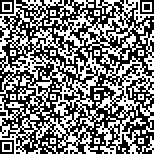| 引用本文: | 丁昊昊,慕鑫鹏,祝毅,杨文斌,肖乾,王文健,郭俊,刘启跃.车轮材料表面h-BN/CaF2/Fe基激光熔覆涂层组织与磨损性能∗[J].中国表面工程,2021,34(4):139~148 |
| DING Haohao,MU Xinpeng,ZHU Yi,YANG Wenbin,XIAO Qian,WANG Wenjian,GUO Jun,LIU Qiyue.Microstructures and Wear Properties of h-BN / CaF2 / Fe Based Laser Claddings on Wheel Material Surface[J].China Surface Engineering,2021,34(4):139~148 |
|
| |
|
|
| 本文已被:浏览 1324次 下载 833次 |

码上扫一扫! |
|
|
| 车轮材料表面h-BN/CaF2/Fe基激光熔覆涂层组织与磨损性能∗ |
|
丁昊昊1, 慕鑫鹏1, 祝毅2, 杨文斌3, 肖乾3, 王文健1, 郭俊1, 刘启跃1
|
|
1.西南交通大学牵引动力国家重点实验室 成都 610031;2.浙江大学流体动力与机电系统国家重点实验室 杭州 310027;3.华东交通大学机电与车辆工程学院 南昌 330013
|
|
| 摘要: |
| 激光熔覆铁基合金涂层的摩擦因数及磨损率均较高,h-BN 和 CaF2 作为固体添加剂已应用于激光熔覆处理,然而含 h- BN 和 CaF2 的铁基熔覆涂层在列车车轮材料表面的磨损性能及最佳含量尚不清楚。 因此,以不同比例的 h-BN(0 ~ 2%)、CaF2 (2% ~ 0)和 Fe 基合金(98%)粉末为熔覆材料,在列车车轮材料表面制备合金涂层,对激光熔覆车轮试样进行滚动摩擦磨损试验。 结果表明:涂层微观组织主要由枝晶组织和共晶组织构成,硬度约 800 HV0. 3 ,表面存在残余压应力,其值为 800 ~ 1 300 MPa。 加入 h-BN 粉末可将黏着系数降低至 0. 35~ 0. 39,激光熔覆车轮试样表面以滚动接触疲劳损伤为主,裂纹在表面产生并在塑性变形层内扩展。 随 h-BN 含量增加和 CaF2 含量减小,微观组织尺寸、黏着系数、磨损率、滚动接触疲劳裂纹长度和深度均呈先减小后增加趋势。 h-BN、CaF2 和 Fe 基合金质量比为 1%:1%:98%时,涂层微观组织最致密、残余压应力最大、耐磨与抗疲劳性能最优。 研究结果可为激光熔覆技术在列车车轮上的应用与优化提供理论与技术指导。 |
| 关键词: 激光熔覆 列车车轮材料 微观组织 磨损 损伤 |
| DOI:10.11933/j.issn.1007-9289.20210124002 |
| 分类号:TH117.1 |
| 基金项目:国家重点研发计划政府间国际科技创新合作重点专项(2018YFE0109400)、四川省国际科技创新合作(2020YFH0057)和中国博士后科学基金 (2019M663548)资助项目 |
|
| Microstructures and Wear Properties of h-BN / CaF2 / Fe Based Laser Claddings on Wheel Material Surface |
|
DING Haohao1, MU Xinpeng1, ZHU Yi2, YANG Wenbin3, XIAO Qian3, WANG Wenjian1, GUO Jun1, LIU Qiyue1
|
|
1.State Key Laboratory of Traction Power, Southwest Jiaotong University, Chengdu 610031 , China;2.State Key Laboratory of Fluid Power and Mechatronic Systems, Zhejiang University, Hangzhou 310027 , China;3.School of Mechatronics and Vehicle Engineering, East China Jiaotong University, Nanchang 330013 , China
|
| Abstract: |
| The friction coefficient and wear rate of laser cladded Fe-based alloy were high. h-BN and CaF2 , as solid additives have been used laser cladding. However, the wear performance and the optimum contents of the Fe-based cladding with h-BN and CaF2 are not clear. Therefore, coatings were produced on the railway wheel material using the laser cladding technology, from the powders with different proportions of h-BN ( 0 ~ 2%), CaF2 ( 2% ~ 0), and Fe based alloy ( 98%). The rolling friction and wear tests were conducted. The results show that the claddings are composed of dendritic and eutectic phases. The hardness reaches around 800 HV0. 3 . Residual compressive stresses existed on the surface with the values of 800 ~ 1 300 MPa. Addition of h-BN powder could decrease the adhesion coefficient to 0. 35~0. 39. Rolling contact fatigue damage is predominant on the worn surface of the laser cladded wheel sample. Cracks initiate on the surface and then develop in the plastic deformation layer. With the increase in h-BN proportion and the decrease in CaF2 proportion, the size of microstructure, the adhesion coefficient, wear rate, and length and depth of rolling contact fatigue cracks aredecreased and then increased. When the proportions of h-BN, CaF2 , Fe based alloy are 1%:1%:98%, the cladding has the finest microstructure, the largest residual compressive stress, and the best anti-wear and anti-fatigue performance. The results could provide theoretical and technical guidance for the application and optimization of laser cladding technology on railway wheels. |
| Key words: laser cladding railway wheel material microstructure wear damage |
|
|
|
|

